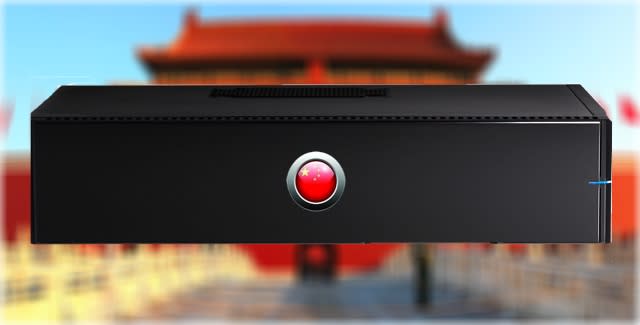Imagining a Chinese game console
Now that game consoles are officially legal in China, everyone is talking about what that could mean for the big console makers Sony, Microsoft, and Nintendo. But there’s another question worth asking: what does it mean for domestic companies who will now be free to make game consoles for the domestic market? What kind of console would they make?
Who could really make a console?
To begin with, I think there are only a few companies with the financial strength to begin such an expensive and risky project. There’s really no one who’s perfectly positioned to put a console together, but here are a few candidates:
Tencent: One of China’s biggest game developers and publishers, Tencent can draw strength from its other areas of business, especially its dominance of China’s social web with chat app WeChat. But the company doesn’t have much of a history with hardware.
Lenovo: The Chinese computer giant has money to burn and a history of making solid hardware. And it has showed interest in the Chinese game console market before, initially been a major investor in Eedoo, the company behind the iSec/CT-510. But that investment doesn’t seem to have worked out very well, and it’s possible the development issues and the lukewarm reception the CT-510 ultimately got has convinced Lenovo that it doesn’t want to get into this market.
Netease: Another major game publisher that has business in other arenas as well and might be able to take on the risk of a large-scale hardware project like this. But Netease doesn’t have much of a history with hardware either.
Of course, there are always dark horses, too. Baidu and Qihoo both have the money and the history of expanding into new market areas, even if neither had much of a pedigree in gaming or hardware. And it’s also possible a lesser-known startup like Eedoo or a smaller company like Xiaomi could raise additional funding to take that plunge if they consider it a lucrative market (but that seems rather unlikely).

What would it look like?
Any console maker designing specifically for the Chinese market faces a number of problems. First and foremost: Chinese gamers don’t like paying for things up front. The free-to-play model may be catching on globally, but it’s virtually a necessity in Chinese gaming at this point, and any system that can’t support that approach to monetization is probably dead on arrival. It will also probably need to be more friendly to MMORPGs than the current console offerings are, as that’s China’s favorite game genre. (And good support for RTS and MOBA games wouldn’t hurt, either!).
To be successful on a broad scale in China, here are some features I think a domestic console would need:
Low price point: No one can afford to give consoles away for free, but the failure of the $600 CT-510 shows that by and large, Chinese gamers aren’t going to pony up that kind of cash for a new domestically-produced console. For smartphones, 2,000 RMB (about $320) seems to be the magic number, and that’s probably an attainable target given a domestic console focused on Chinese games likely wouldn’t need the sort of graphical firepower the PS4 and the Xbox One are sporting.
MMORPG-friendly controls: No one wants to use a mouse and keyboard from their couch, but these games (as well as MOBA and RTS games, also popular in China) are really best controlled that way. So any Chinese console would ideally either find a way to make mouse-and-keyboard work from the couch, or replace them with an innovative new controller of some kind (perhaps something like Valve’s Steam Controller if that ultimately proves viable).
F2P/freemium monetization support: The console’s whole approach to game monetization would have to be different, because most Chinese gamers aren’t going to pay $60 apiece upfront for new games. Instead, the system would have to support free-to-play games that could be downloaded from the web, and the variety of payment systems that approach often entails. Whatever company was behind it would also have to find a way to make those numbers add up, since console markers don’t generally generate huge profits from the sale of the devices themselves.
All the Chinese social and web apps: Because Chinese gamers love chatting, video-chatting, streaming movies, and online shopping as much as anyone, a truly appealing console is going to need to feature apps that allow users to do that stuff on their TVs too. That means a webcam of some kind, and partnerships with all the major companies involved: Youku for video, Alibaba for e-commerce, Tencent and Sina for social, etc.
Brand appeal: Chinese gamers already have great ways to play their games, and with global console makers invited to the party, a Chinese game console is going to need more than just good features to stand out. If whatever company makes the console can ramp up the hype train the way Xiaomi (for example) was able to, then it’ll start turning some heads and Chinese gamers will be interested. Without good branding, though, I suspect even a well-designed domestic console is doomed to stay in the shadows of the global imports backed by multimillion-dollar marketing campaigns.
In short, anyone attempting to create game console for China is facing a pretty difficult road. And with the advent of Steam Machines, such a machine would likely be facing even more entrenched competition by the time it finally released. China’s gamers don’t seem too excited about the prospect; in a recent web poll on 17173, only 12 percent of the 900-plus respondents said they were optimistic about China being able to produce a good domestic game console.
Still, I’d love to see someone give it a shot — the world could use a Chinese gaming console.
This article was first published on Games in Asia.
The post Imagining a Chinese game console appeared first on Tech in Asia.


